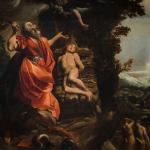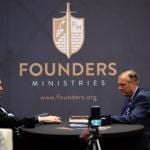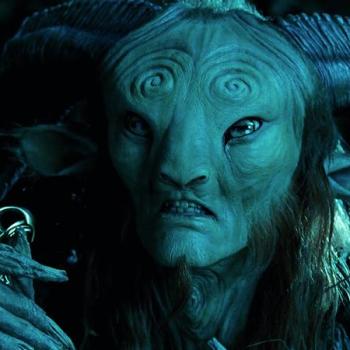 In general, this column covers a lot of pretty heavy topics. Some days, it’s time for something different (I figure I’m entitled to at least one dorky Star Wars post per movie).
In general, this column covers a lot of pretty heavy topics. Some days, it’s time for something different (I figure I’m entitled to at least one dorky Star Wars post per movie).
After two viewings of The Rise of Skywalker, my sentiments remain decidedly mixed. As I wrote in my review, there’s not really a single original idea in the whole film, and the film’s conclusion amounts to little more than a restoration of the post-Return of the Jedi status quo. (I fully expect Episode X to involve the fall of The Last Jedi’s Broom Boy to the dark side. Rinse and repeat.)
There’s a part of me that still craves more, a richer and more thought-provoking wrap-up of the legendary series. Think back to the climax of Return of the Jedi, when Luke removes his dying father’s helmet and father and son are finally face-to-face. That’s a powerful ending—the capstone of a full character arc for the troubled Anakin Skywalker—and there’s simply nothing like that on offer in Rise.
Maybe, though, I’m asking too much. One of the more bitingly accurate lines of critique floating around the Internet points out that Star Wars is, at heart, a series for children—and it makes no sense to dissect and debate it endlessly, particularly within a fanbase that really should be talking about movies by Martin Scorsese or Alfonso Cuarón or Greta Gerwig. There’s a lot of truth in this. (On the second viewing of Rise, it’s hard not to notice the sheer amount of content that exists for the purpose of selling toys and other branded products.)
On the whole though, I’m not persuaded, because there’s simply too much complex thought going on beneath the surface of Star Wars. It’s well known that George Lucas patterned his saga on Joseph Campbell’s seminal study of mythmaking, The Hero With a Thousand Faces. Irvin Kershner, director of The Empire Strikes Back, thematically relied on Zen Buddhist concepts in developing his concept of the Force. The “tragedy of Anakin Skywalker” that plays out across the three prequel films is laced with elements of classical Greek drama. I could go on, but it seems obvious that as far as narrative depth is concerned, there’s a lot of daylight between Star Wars and, say, Pixar’s Cars. And that depth, I think, explains why Star Wars shaped the storytelling sensibilities of several generations’ worth of kids (including me).
Ill-advised talk of “midichlorians” notwithstanding, I think Star Warshas always been at its strongest and most interesting when it’s wrestled with the theological questions it places front-and-center. To my mind, the struggle to understand the Force is, in essence, a struggle with that which—as Thomas Aquinas might’ve put it—“all men call God.” Examples of this are all over the saga, but Rise notably includes a scene in which two ex-stormtroopers use the language of Providence in referring to the purposes and guidance of the Force. Luke Skywalker, in The Last Jedi, grapples with whether the Jedi teachings are really compatible with the transcendent reality of the Force. In the original trilogy, skeptical smuggler Han Solo eventually finds his preconceptions upended by the undeniable power of the Force. On and on it goes.
I like to think about this by way of a Thomistic theological perspective (which strikes me as likely the most compelling and cohesive way to consider the metaphysics of Star Wars). On this reading, the Sith are those who employ their natural powers, given to them by the God who creates and sustains them in being, in destructive and violent ways; the Jedi are those who employ their powers to heal and build. This, in turn, means that talk of the “light side of the Force” and “dark side of the Force” is inherently analogical; it is, at bottom, talk about the rightly ordered use and the disordered use, respectively, of abilities granted by God. Campbell (and Lucas) were surely no strangers to this way of thinking—which largely tracks the philosophia perennis of classical metaphysics.
The prequel films augment this narrative by suggesting that the formal teaching of the ancient Jedi Order—which, in line with traditional Buddhism and some forms of Hinduism, eschews attachment and emotion—is a doctrinal error, one that triggers the rise of Darth Vader. This would suggest that talk of an “imbalance in the Force” is most properly understood as talk of the false dilemma between the sterile alienation of the Jedi and the hedonic libertinism of the Sith. “Restoring balance to the Force” entails the recognition that love is part of human flourishing, part of the Force’s gifts to all people—and is perhaps the essential character of the Force itself. This false dilemma, then, is the doctrinal error to which Luke has seemingly awakened in The Last Jedi, when he criticizes his Jedi forerunners while simultaneously affirming the power and reality of the Force.
This philosophical approach to Star Wars, I submit, goes a long way to explaining why the story captivates so many people. It’s captivating because these themes are true: like every good myth, Star Wars routinely uses the guise of fiction to communicate powerful truths about the human condition.
Of course, for any particular story to work, there needs to be a meaningful conflict. The very high-level themes I’ve sketched above provide a compelling backbone for the saga as a whole, but don’t lend themselves to condensation into compelling one-off stories. And this is where, to my mind, the new Star Wars trilogy has struggled in comparison to its predecessors.
In the very first Star Wars flick, we have a simple good-versus-evil story: a young hero defeats an evil empire. Once that film expands into a trilogy, we have a redemption arc; once it becomes a six-part saga, we have a full mythic cycle. But what does the sequel trilogy bring to the table? It’s hard to say, because the villain’s master plan is nothing more interesting than “conquest of the galaxy”—the same master plan that propelled 1983’s Return of the Jedi.
This isn’t enough anymore. Thanks to the prequels (and an ocean of expanded-universe content), the Star Wars story has deepened since then. The themes are more complex, and the metaphysical stakes higher. So what’s a next-generation storyteller to do?
(For one thing, keep Emperor Palpatine cold in his grave. But I digress.)
The answer to this question, it seems to me, is found in what may be my favorite Star Wars story of all time—the 2005 role-playing game Knights of the Old Republic II: The Sith Lords. Set thousands of years before the prequel trilogy, in the aftermath of a brutal galaxy-spanning war, KOTOR II centers on the “Sith Triumvirate” of Darth Nihilus, Darth Sion, and Darth Traya—each of whom relates to the Force in a fundamentally disordered way. Darth Nihilus is a “wound in the Force” who subsists by preying on the life force of others; Darth Sion only cheats death by holding his broken body together with Force energy; Darth Traya seeks to negate or forget the Force in the name of absolute free will, whispering to the player character that “there is no truth in the Force. But there is truth in you, Exile.”
The motivations of all three of these characters powerfully cohere with the saga’s philosophical underpinnings. Nihilus, the Lord of Hunger, refuses to accept the limitations of his human nature, and as a result metamorphoses into something utterly inhuman. Sion, the Lord of Pain, seeks nothing but pure persistence in being—what theologian David Bentley Hart might call “hyparxeolatry,” the “squalid” phenomenon of “mere bare existence . . . entirely severed from free and rational participation in the goodness of things.” And Traya, the Lord of Betrayal, rejects all absolutes—even the Force—in the name of unfettered, Nietzschean choice, asking “at what point does the power the Force exerts submerge any attempt at choice, or free will?” and urging a philosophy beyond any “infantile delusions of right and wrong.”
Any one of these figures exemplifies real evil—a headlong flight from the good into the abyss of annihilation and fragmentation. The “dark side of the Force” is here recast as the terrible power of created things to direct their wills toward self-destruction and the pollution of the world. Characters driven by that motivation are truly terrifying, because they can’t be bought, bullied, reasoned, or negotiated with—their malice goes far beyond anything as pedantic as “conquering the galaxy.” This is also why stories about demons, not just ghosts, are so chilling—such stories present the possibility that there are creatures so corrupt, so violently opposed to God’s creative act, that they want to destroy themselves and everyone else along with them.
Now, who doesn’t want to see Luke, Rey, Leia, and Finn fight for the Force against that sort of villain? This is the type of ultimate-stakes, good-versus-evil battle for which the saga has already laid the groundwork, and it’s a genuine thematic step beyond anything we’ve seen onscreen so far.
Despite statements suggesting that the Star Wars series will be put on hiatus following Rise, I have no doubt that the Disney empire won’t put its cash cow out to pasture for very long. Perhaps if the writers (maybe with an undercover Thomist among them…one can hope) engage in any serious reflection on why the franchise exerts such a spell over so many viewers, they’ll hit on something like this.
The pieces are all there. If the Star Wars creative team wants to once again tell a tale that successfully moves beyond simple fanservice, the path is wide open for them to do so.












